
Towering behind a dark iron gate, just off Milwaukee Ave. in the Logan Square neighborhood of Chicago, stands an apartment building, a refuge from the mainstream music world of MP3s and internet streaming. Not only is this the home of Patrick Campbell, front man of the cassette-only-released band, Le Tour, but it is also a sample of Chicago’s underground music scene. Walking through the gate is like free falling back to 80s hair bands and homemade mixtapes. Up the stairs is the front door, a gateway to experiencing the DIY music community focused on cassette resurrection.
In the rise of do-it-yourself projects, music production is no exception. What started as an affordable way for bands to produce physical formats grew into a collaborative community within the Chicago music scene, contrasting the traditional competitiveness of the music industry.
Aside from Le Tour, Campbell, 29, is an avid collector of both classic and local cassettes. There seems to be no organization among Campbell’s collection as tapes scattered throughout the musician’s apartment. Campbell picks up what looks like a canvas cooler sitting by the front door and shows off the container with nearly 50 cassettes perfectly arranged. Continuing further into the apartment, beside a couch in the living room, a floor to ceiling shelf holds both vinyl and cassettes of classic 70s rock musicians, most of which Campbell inherited from his parents. Next to another couch in the same room, a wooden wall rack filled with recent cassettes of local bands lies on top of three more canvas containers, also filled with cassettes.
“I have 375 tapes plus a whole sack full at work. I’m still trying to find a place to put them,” says Campbell.
Although the core product of Campbell’s music fascination may differ from the norm, physically he fits quite nicely with conventional musician appeal. Campbell is clean shaven and trendy and he wears blue jeans and a deep purple cardigan. The sides of his head are shaven but the top is grown out and bleached, a popular hairstyle among the all genres of the music industry from R&B singer Justin Timberlake to Panic! At The Disco’s Brendon Urie.
Campbell reaches over the arm of the worn couch and pulls out his favorite cassette from the wooden rack: an extremely limited release from the local artist Mac Blackout. The cover art is a picture of a woman’s backside wearing black see-through-laced underwear against an orange and yellow backdrop. The 16-track cassette was one of ten released for this past September’s first National Cassette Store Day.
“[Mac Blackout] and I were the only two people that came with limited edition cassettes. We traded and he’s become a really good friend of mine since,” says Campbell as he also announces Le Tour’s next cover art will be done by Mac Blackout. “You’re not going to strike it rich with cassettes, but you will make a lot of friends,” says Campbell.
Campbell heads upstairs passing a hallway closet on the way. Inside: more cassettes, this time resting in shoes boxes on the floor. Upstairs is Campbell’s recording studio, literally run out of a bedroom. Campbell works under his self-started label, Golden Beast, which has put out one of Le Tour’s four cassettes. The studio setup is simple. A Tascam four-track and eight-track are stacked beside each other on a metal computer desk taking little space in the corner of the room. Headphones and other cords messily hang from the soundboards.
On his way to the desk, Campbell crashes into a disassembled drum set spread out on the floor. Instead of acknowledging the collusion, he plows through the drums to his 8-track.
“I got [the 8-track] from a guy who was using it to record his church band in Rockford, Ill. He was selling it for $75 on ebay. I almost lost my mind. He had no idea how much it was worth. I drove out there that night and arrived around midnight. He was pissed I got there so late, but I was freaking out. There are other people looking for stuff like this and I knew if I waited until the next morning it would be gone,” explains Campbell.

Campbell plays a personally recorded cassette on his four-track. At first the sound is a static mush of guitars, bass and drums. The individual parts are hard to separate. Campbell plays with the knobs on the four-track’s soundboard in attempt to pull out a clearer sound, but the static is still overwhelming. The sound of cassette must be an acquired taste. To an ear raised on CDs and digital files, cassettes lack the crisp notation of modern mediums, but Campbell doesn’t seem to notice the flaws. He’s too far gone into his 15 year love affair.
The first compact cassette was released by Phillips in 1963. Originally the cassette was marketed for voice recordings, until 1971 when the first “hi-fi” cassette recorder, Advent Model 201, was released, making the cassette a viable option for recording music. Combined with the portable Sony Walkman release in 1979, cassettes became the preferred medium of the 80s. In 1984, cassettes outsold LPs for the first time and remained one of the highest selling mediums until the uprising of CDs in the 90s. Even with the arguably better sound quality, music industry professionals agree that the sales of CDs began to dwindle in the mid-2000s and according to a 2013 article in Billboard’s blog BillboardBiz by Ed Christman, are currently at an all-time low mainly due to the development of digital music files and internet streaming.
With physical sales of all formats dwindling and a rise in illegal downloading, it would seem logical for small independent labels to cease recording. However, along with the rise of cassettes, comes the rise of cassette labels, a contradiction to a trend that allows for artists to do everything on their own. Labels originally started as a resource to reproduce and distribute music to the masses.
Today, small independently owned cassette labels succeed by marketing themselves as an essential creative element to the production of music.
“Musicians continue to go to labels either because they lack knowledge of the business or they want to focus on the art and let someone else focus on the logistics of production and promotion,” says Ryan Durkin, co-owner of the Chicago based record label, Hewhocorrupts Inc.
Dressed casually in a red flannel shirt and dark jeans, the middle-aged man appears relaxed, leaning back into a chair, ready to share the struggles and successes of his near 14 years in the music industry. Durkin started his first cassette-only record label, Hewhocorrupts Inc., in high school out of necessity to produce physical copies of his own band’s music. “Cassettes are intimate [and] in some weird way, I think most people find cassettes more endearing than a CD”, says Durkin as he reminisces about the popularity of teens and young adults in the ‘80s making mixtapes for loved ones.
As trends shifted from cassettes to CDs in the late 90s, Durkin decided to start Hewhocorrputs Inc, with the intention to mass produce CDs at an indie level. The label continued to grow until the fall of CDs in the mid-2000s causing the label to lose nearly $20 thousand dollars in releases. “In the past, there were a lot of indie distributors that worked with indie labels to sell hundreds of CDs to large department stores. When the music industry began to fall apart (a combined result of pirating digital music files and the 2008 recession) these distributors became bankrupt,” explains Durkin. With a fixed cost to CDs, it becomes financially challenging for small labels to put out larger quantities of the format. “You can’t make 1000 CDs anymore,” says Durkin, because without the distributors and the demand for the format, labels are not making back their money. With the label struggling, Durkin and his business partner needed to make a decision: either cut the label or find a cheaper alternative to CDs.
“Cassettes were coming back in style, they didn’t cost as much, there wasn’t as much risk, and [bands] still had this tangible thing to sell at concerts,” says Durkin. The cheapness of production was not the only thing that attracted Durkin to cassettes. As a full time occupational therapist and new father, Durkin wanted a medium that required less physical work and time. The label decided upon putting out limited edition releases for specific bands on their label. “For a cassette collector, you’re already talking about an antique medium, so making it limited on top of that creates hype,” says Durkin. Today the label puts out a mix of digital and limited edition cassettes and splits the revenues between the bands and local charities.
Nick Zettel, the highly-energetic owner of ‘Spective Audio, had a similar start to his cassette label in Logan Square. After watching friends recording experimental music on tapes at a Chicago bar, Zettel decided to gather local musicians and put out tapes of his own. “It was dirt cheap and easy to do,” says Zettel whipping his head to the side in attempt to move his hair from his face. Commercially pressed cassettes average $75 for 50 copies or musicians can purchase cassette duplicators and blank cassettes to press their own. The latter may be cheaper when producing larger quantities but takes significantly more time. “[Hand pressing cassettes] is a true labor of love,” says Zettel.
Eventually Zettel built a base of working relationships by word-of-mouth and suddenly found himself immersed in a community of likeminded individuals who thrived on cassettes. The market for cassettes is considerably smaller than the market of other physical formats and those involved are part of a core community. “People who create cassettes are often the same people who buy and sell them,” says Zettel, “and unless you are actively involved in the community, you probably do not have motivation to buy cassettes or the means to play one.” Although if one wanted a means for playing cassettes, Craigslist provides a variety of cassette decks, some as low as $10.
Zettel explains that cassettes are less about commerce and more about trade as many cassette labels, artists and collectors accept used cassettes as payment for new ones. Artists are not looking to make a profit from selling physical copies, mainly because there is no profit to be made as the average cassette is sold between $5 and $8. Instead musicians and labels are more interested in creating a unique token for fans, typically only released in limited quantities, roughly between 100-150 copies depending on the artist. The initial release party is the biggest opportunity for band’s to get their cassettes sold. After that, the hype dies down and the remaining shipment is place in local record stores on a consignment deal. “Bands rely on tours and digital sales for profit, not physical copies and they are not trying to make profit off cassettes,” says Zettel.
In comparison to vinyl, most who work with the medium agree that cassettes have a considerably weaker sound quality. Vinyl is mastered at high volumes to allow for a large frequency range which puts emphasis on dynamics. “Tape can sound good, but people use it to manipulate [the sound]”, says Zettel. “There are a lot of experimental acts that are extremely high art and make elaborate and intricate compositions, which tape is perfect for because not only can you play with frequencies, you can also press about 120 minutes per cassette allowing for an extend piece of music without the track breaks of a CD,” says Zettel.
Jason Shanley, an experimental guitarist, who goes by the stage name Cinchel, has been working with cassettes from the beginning of his musical career. For a man who spends his free time performing to a decent sized group of individuals, Shanely is rather shy. His eyes are cast toward the floor as his chin length hair falls to his face but stopped from obstructing his vision by wire rimmed glasses.
Shanley’s words are soft as he describes his views on the difference between cassettes and CDs much in the same way an artist views the difference between oils and watercolors. “Each medium has its own function,” says Shanley, who believes a cassette’s best quality is its ability to record lengthy uninterrupted songs without the necessary track breaks of a CD.
“A 60 minute cassette is perfect if the music remains interesting,” says Shanley fiddling with previously recorded guitar tracks to create a psychedelic guitar symphony. The goal, says Shanley, is to manipulate the sound of numerous guitar riffs into the illusion of one instrument. His sound is light and airy, using drones to create a structured backdrop to the short and sporadic melody played by quick pics of a guitar’s single string. While the scratchy intrusion of static is still present, it works with Shanley’s sound, adding another voice to the choir.
“I think people have a misconception that cassettes produce a massive amount of hiss and lack dynamic, but I think there is a warmth and compression that is inherent in the medium,” says Shanley. Shanley is an improvisational guitarist, meaning the chances of replicating the exact sound are uncommon, but it adds another element of uniqueness, a fitting quality for a medium that draws appeal to collectors from its rarity.
Shanley says that for him, putting out cassettes is not a money-making project, but more of an egotistical opportunity to support and connect with other musicians. “Locally [the DYI music scene] is well-connected, close, and supportive,” says Shanley admitting most of his closest Chicago friends started as fellow concert-goers he continually spotted at shows. When Shanley first began attending Chicago shows in the early 2000s, he describes being drawn to an energy in venues that felt genuinely connected. “Even when I wasn’t part of [the music scene] by playing shows, there still seemed to be a good sense of community,” says Shanley.
With this past September marking the first National Cassette Store Day, record stores were given the opportunity to connect with the cassette community. Nick Mayor, co-owner of Bric a Brac Records in Logan Square, says what he enjoys about the holiday, aside from the foot traffic of cassette collectors, is the opportunity to support local music. The store featured performances from eight Chicago bands and set up a tape fair in the back of the store for local labels to come in and sell their cassettes.
While cassette sales are not reaching the same heights as vinyl, Mayor says the store sells at least a couple of tapes a day. “I’ve been told from an independent party that we have the best cassette collection in the city. I pride myself on that,” says Mayor. Like a touch of wall art, two pink wooden shelving units hang on the right wall just past bins of records. Sitting upon the shelves is a collection of cassettes, ranging from 60s classic rock gods to 90s punk princes to local experimental solo acts. Each tape is an intimate band token often released in limit quantities. Every sleeve is unique works of art adding a personal touch of the band to the final packaging.
“We get a few regulars in here who make a B-line for the cassette wall when they see posts on social media that we’ve got something new,” says Mayor. “With the limited runs it’s appealing to a collector when they can say they are one of two hundred people who own a specific cassette,” says Mayor.
But not everyone in Chicago’s music scene is a fan of the cassette. At Bucket O’ Blood Books and Records in Logan Square, the cassettes are hardly noticeable, making two vertical stacks on a wire shelf off to the left of the rather large vinyl collection. “We’ve done pretty well with local labels, like Hewhocurrputs,” says Grant Mckee, owner of Bucket O’ Blood Books and Records, pulling out a recent release of the metal band Deadlevel, one of three different cassettes the store is currently carrying from the label. But Mckee, says what matters to him is content, not format. “I think that the cassette resurgence to a large extent is totally nostalgia. I think people went back to vinyl for a warmer sound or a large format for the artwork, neither of which cassettes offer,” says Mckee. Even without a personal interest in cassettes, Mckee still offers a small collection mainly consisting of 60s classic rock and local band releases, but says if given the option, he’d prefer to sell vinyl.
With no major outlet, no commercial profit, and a limited audience it looks as if the cassette trend would eventually diminish as newer and more efficient mediums surface. But the one thing cassettes do have is a committed community that has continuously worked to keep the medium alive. While cassettes may never be the reigning medium that they once were, they have made a name and a home for themselves in Chicago’s underground DIY music scene and it doesn’t look as if they’ll be moving out anytime soon

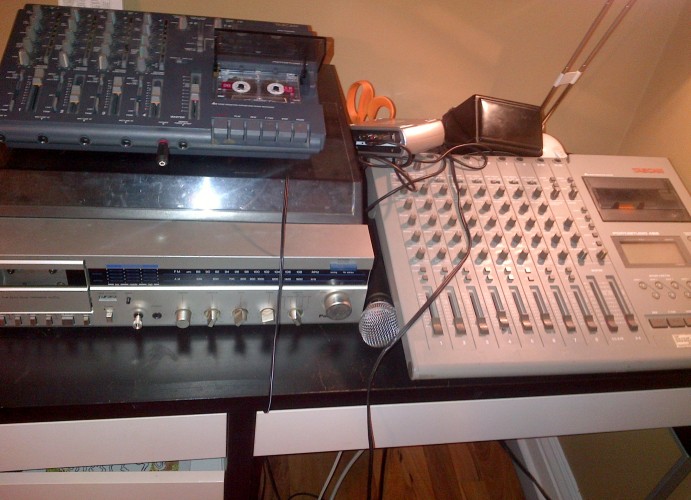


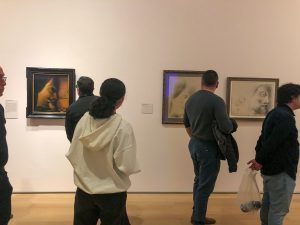

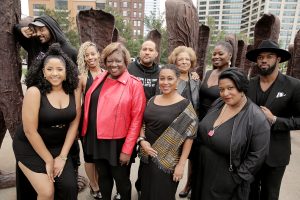

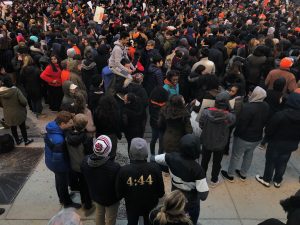



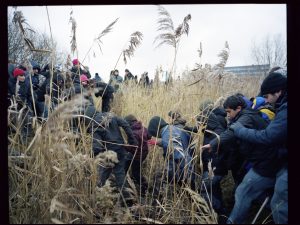






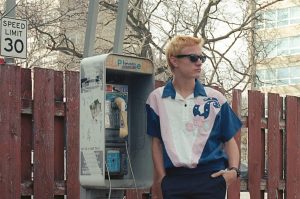
Be First to Comment